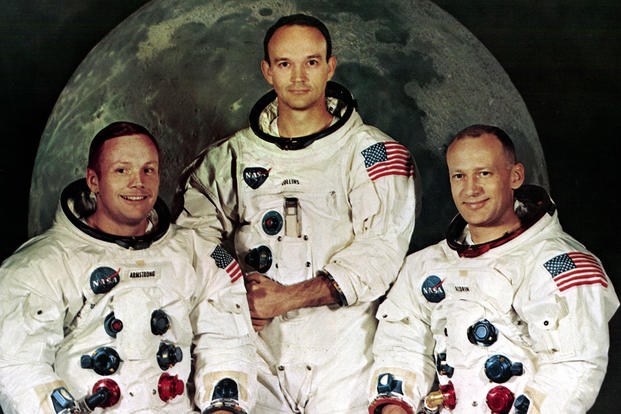As he maneuvered the command module Columbia near the moon and watched Neil Armstrong and Buzz Aldrin take their historic first steps out of the lunar module Eagle, Air Force Col. Michael Collins wondered, "What will it be like if we really carry this off and return to Earth in one piece, with our boxes full of rocks and our heads full of new perspective for the planet?"
At the time of the Apollo 11 mission in the summer of 1969, no one could yet answer that question since no one had yet stepped on the moon. Cols. Armstrong and Aldrin would soon experience the moon's surface for themselves and gain fame as the first men on the moon.
Someone, however, had to remain in the spacecraft that orbited while they walked so that they could return to Earth with their rocks and perspectives. That someone was Collins.
An Army brat, Collins graduated from the U.S. Military Academy in 1952 with an Air Force commission. In 1962, he was admitted to the Aerospace Research Pilot School at Edwards Air Force Base, where he stayed until his selection as astronaut. "Here I am, a white male, 38 years old, height 5 foot, 11 inches, weight 165, salary $17,000 per annum, resident of a Texas suburb, with black spot on my roses, about to be shot off to the moon," Collins wrote. "Yes, to the moon."
Collins knew that "now it was time for us to give our best." As the lunar module separated for its descent to the moon, Collins radioed "You cats take it easy" to Armstrong and Aldrin. But inside, he was aware that "this voyage is fraught with hazards for three of us -- especially two of us."
Yet Collins and his comrades lived to tell the tale, returning to Earth on July 24, 1969, as heroes. Collins, whose subsequent career and life has been full of honors, was able to ponder "what will it be like …" each day during his 1971-78 tenure as director of the National Air and Space Museum. After all, he not only brought the project in under budget there and ahead of time for its opening on July 4, 1976 -- each day he walked beneath the craft in which he had flown "yes, to the moon."
Want to Know More About the Military?
Be sure to get the latest news about the U.S. military, as well as critical info about how to join and all the benefits of service. Subscribe to Military.com and receive customized updates delivered straight to your inbox.














